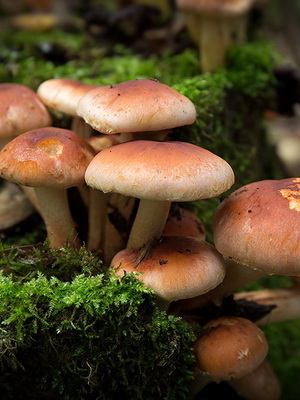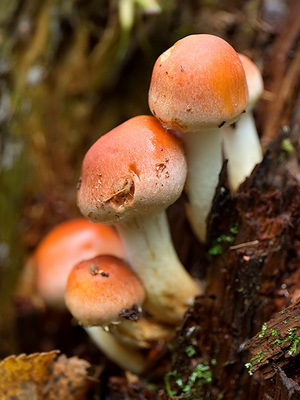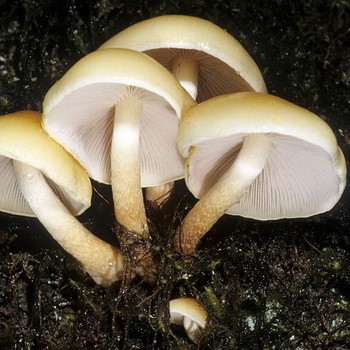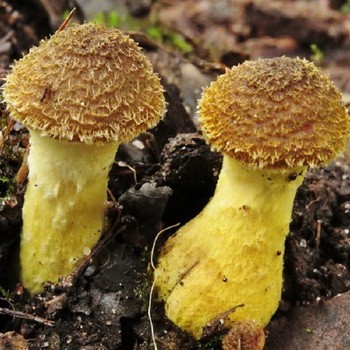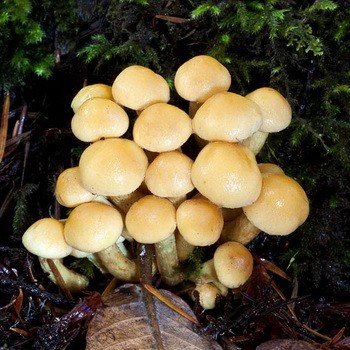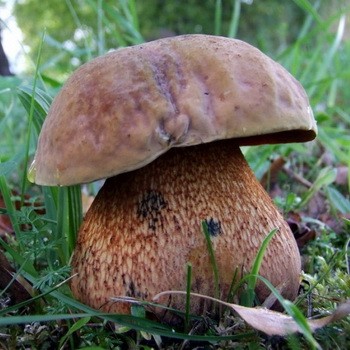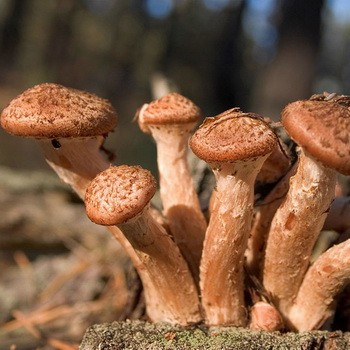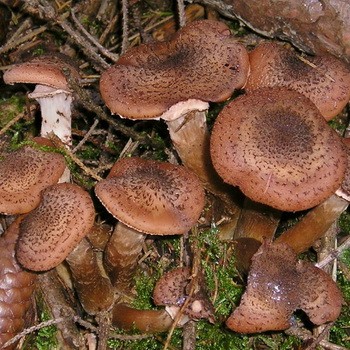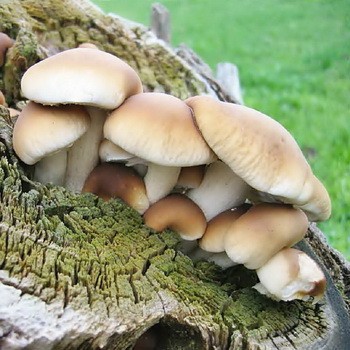False brick red honey agaric: photo and description
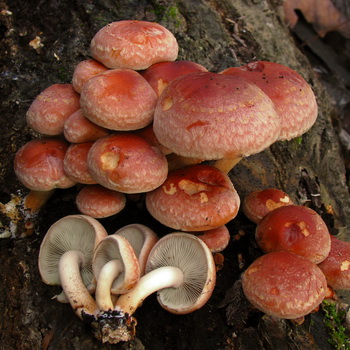
Brick-red honey agaric differs from other species of honey agarics in a characteristic color corresponding to its name. However, inexperienced mushroom pickers can often confuse this type of fruiting bodies with autumn honey mushrooms. Especially when you consider that their growth time and place of settlement are almost the same.
We suggest that you familiarize yourself with the description of brick red mushrooms and see a photo that clearly demonstrates the appearance of the mushroom.
Appearance and distribution of brick red mushrooms
Latin name: Hypholoma sublateritium.
Family: Strophariaceae.
Gender: Hyphole.
Hat: at a young age, it is round-convex, with age it has a half-open, less often flat appearance. Sometimes right in the center you can see a small tubercle. The average diameter is 5–9 cm, for mature individuals - up to 13 cm. The surface of the cap has a characteristic red-brown, yellow-brown (darker towards the center), as well as brick-red shades. The edges are lighter in comparison with the main color, often covered with "rusty" spots.
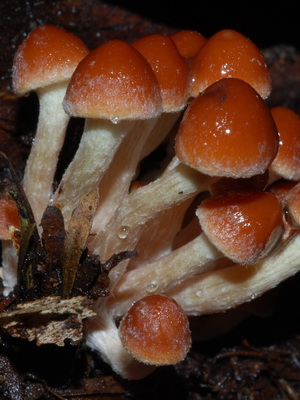

Pay attention to the photo of the open brick false brick red. In addition, the remains of the bedspread in the form of white or yellow flakes are observed at the edges.
Leg: high - from 7 to 13 cm, cylindrical, hollow, thickness is from 0.5 to 1.5 cm. Brownish brown at the base, closer to the top it is lighter and has a yellowish color, curved, sometimes even and narrowed downwards. There is no characteristic ring around the leg, however, you can always notice the remains of a private bedspread, forming an annular pattern.
Pulp: dense, white with a yellowish tinge, sometimes dirty yellow or brown-yellow. It tastes a little bit bitter, the smell is pleasant, but not saturated.
Records: frequent, adhering to the peduncle, in young individuals white with a yellowish tinge, with time become yellow-brown. In old mushrooms, from maturing spores, the plates acquire a gray-brown hue.
Edibility: toxicity information is inconsistent. In Russia, opinions about the edibility of honey mushrooms of false brick red differ. No one can accurately answer this question. Some sources claim that these species of fruiting bodies are inedible and even poisonous, while others classify it as conditionally edible. However, abroad it is collected, thorough heat treatment is carried out, and then they are salted or pickled, like ordinary mushrooms. Some argue that brick red honey agar is not harmful to health, but because of bitterness it is impossible to eat.
Application: according to the conclusion of some mycologists, it can be used after repeated boiling. Sometimes used for medical purposes as an emetic-laxative.
Similarities and differences: has similarities with seroplate honey worm (Hypholoma capnoides), but the latter is smaller in size. It also differs in the color of the plates - in gray mushrooms they are gray. It also has similarities to false-sulfur foil (Hypholoma fasciculare) - a poisonous mushroom.
Spread: deciduous, rarely coniferous forests. They grow in summer and autumn in large families on stumps and fallen trees.
Take a look at a few more photos of brick red honey worm that will help to successfully identify it among other species:
